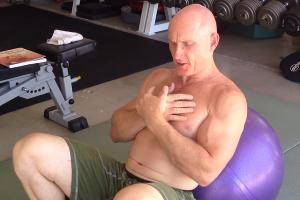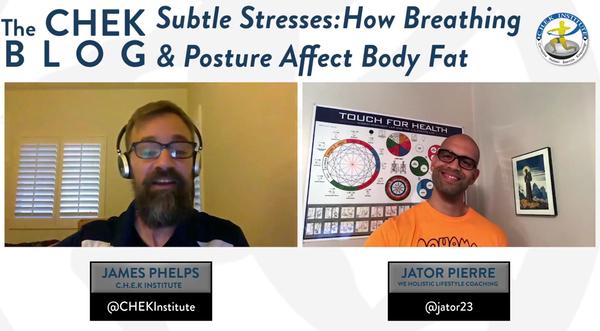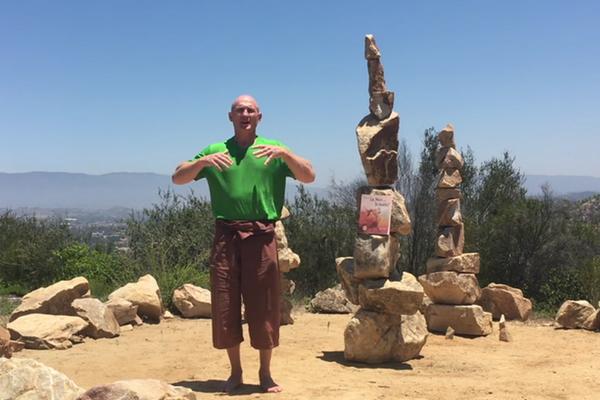Your Posture Affects How You Breathe, The Way You Exercise
by Paul Chek

 Do you know about the posture-breathing-exercise relationship? Your posture affects your breathing, which affects the way you exercise, which affects your posture… Put together, breathing, posture and exercise form a supportive trifecta that boosts your optimum health.
Do you know about the posture-breathing-exercise relationship? Your posture affects your breathing, which affects the way you exercise, which affects your posture… Put together, breathing, posture and exercise form a supportive trifecta that boosts your optimum health.
How? Efficient breathing requires good posture, which is an excellent sign you’re also following an effective exercise program. That’s the simple explanation… Here’s the details!
Breathing and Posture
For starters, poor posture leads to inefficient and labored breathing, creating tension in primary and secondary respiratory muscles like the levator scapulae (a skeletal muscle located in the back and side of the neck).
When breathing becomes very labored, your shoulders rise as you inhale, because your primary respiratory muscles aren’t able to ventilate your body effectively. Behind the scenes, your posture has locked up important joints that now take tremendous force to move, making the act of breathing fatiguing.
This locking may be the result of a poorly designed exercise program, too much exercise or not enough exercise to counteract the demands of any work inside or outside of the gym.
A classic example is the overuse of sit-ups or crunches that can shorten the abs into a position of exhalation that will increase the amount of effort needed to breathe normally. (This can be disastrous, for example, if you’re also a competitive runner, whose optimal exchange of oxygen and carbon dioxide can be the deciding factor between first and last place.)
 Another obstacle affecting your posture: Prolonged sitting at work or commuting in your car or bus — not to mention in front of the TV – reduces the curve in the lumbar spine, leading to flat back posture and all the associated muscle imbalances that go along with it.
Another obstacle affecting your posture: Prolonged sitting at work or commuting in your car or bus — not to mention in front of the TV – reduces the curve in the lumbar spine, leading to flat back posture and all the associated muscle imbalances that go along with it.
Yet, too many people who already have a flattened lumbar curve are going to group exercise and Pilates classes and being told to flatten their backs into the floor when they perform abdominal exercises! Instead of correcting problems created by their sedentary lifestyles, these ill-fitting exercise programs are making them worse.
Breathing and Exercise
Unfortunately, the backward way many people are taught to breathe during exercise is designed with no thought to physiology. It’s really quite simple once you know where to pay attention: movement in the spine and extremities. (See Table 1 below.)
In short, if you are doing any exercise that moves you toward the fetal position, breathe out. Also breathe out on exercises where your spinal curvatures increase. Conversely, if the exercise moves your arms and legs away from the center, or your spine lengthens, then breathe in.

Thinking of it a different way, if you are getting taller as you’re doing a movement, breathe in. If you’re getting shorter, breathe out.
With some exercises, the way you breathe is completely different depending on the grip you use, as this affects both the mechanics of the shoulder and how the spine moves in relation to the shoulder.
For example, when you’re doing a pronated grip chin-up (your palms are facing away from you), you’ll want to breathe in when you pull toward the bar. With a neutral grip (palms facing toward each other) or supinated grip (palms facing towards you), you will breathe out as you perform the pull-up.
However, if you breathe in as you’re pushing, you’re totally confusing your body, because inhalation excites the extensors. If you’re pushing and exciting the extensors, it’s like telling someone to stop and go at the same time, not a good recipe for successful athletic performance!
Dual functionality
The respiratory system has a dual function. It also serves as a stabilizer system. The diaphragm is primarily a respiratory muscle and secondarily a stabilizer muscle. You can easily experience that in the gym.
Choose any exercise, such as a deadlift, and start with a light load that you can lift at least 20 times while breathing. Then, increase the load to more than 60 percent or one that you cannot lift 20 times in a row.
As you try to lift the load, you’ll stop breathing because, as the nervous system senses the threat to the spinal cord, the diaphragm switches to its stabilizer role since it is a massive muscle that connects to most of your ribs and helps to stabilize the body in the transverse plane.
So for exercises such as the deadlift, the breathing technique will vary depending on the weight being lifted. If the weight is light enough, you probably won’t need to hold your breath to help stabilize the spine.
But, if the weight is heavy enough that you cannot breathe through the exercise, inhale at the start, hold your breath as you stand up and breathe out on the way down with pursed lips to keep pressure in the core.
Now, you have a better understanding how breath, posture and exercise are uniquely related. Efficient breathing requires good posture. Good posture comes from effective exercise programs. In turn, breathing can facilitate exercise to enhance posture and optimize results and performance.
Breathing is an essential component of life and can both energize and relax you when performed properly and with intent. By paying attention to your breathing when you exercise you can attain the benefits of both working out and meditating.
I have meditative weight-lifting sessions all the time… It’s beautiful.


